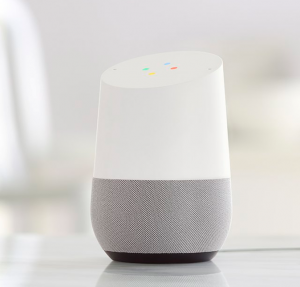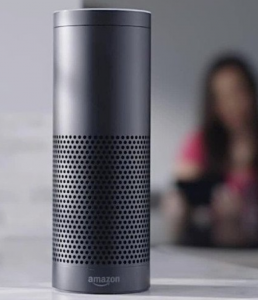It’s official; voice is where it’s at. Millions of people are already enjoying the technology thanks to devices like Amazon’s Echo and Google Home, and the number of users is growing quickly. Add to that the popularity of voice-oriented smartphone interactions, and it’s no surprise people are clamoring for the chance to use the voice to get things done.
As an event professional, you’ve likely wondered if there are ways to bring these technologies into your next conference or meeting. And the short answer is a resounding, “Yes!”
While some of these technologies are still in the early phases, and there are many ways the solutions can improve, the potential is definitely there. Here is what you need to know about these devices and how they may improve activities at your next event.
Voice-Activated Check-In
 One area that all event professionals want to streamline is the check-in process. Many conferences still have attendees waiting in line to meet with a person to complete the process, which isn’t necessarily the most pleasant or efficient approach. However, the increased use of kiosks and automated check-in options are improving these experiences, and voice-activated devices have that potential too.
One area that all event professionals want to streamline is the check-in process. Many conferences still have attendees waiting in line to meet with a person to complete the process, which isn’t necessarily the most pleasant or efficient approach. However, the increased use of kiosks and automated check-in options are improving these experiences, and voice-activated devices have that potential too.
Imagine your attendees simply walking up to a station or tablet, and talking to the device to get checked in. Voice recognition technology is improving and often only requires a short sample to be potentially effective. Event-goers can preset a vocal phase before arrival and then repeat it to check-in. Then, all they have to do is start enjoying themselves.
Better Information Retrieval
 When you select an event app provider, have you asked them about voice-activated functionality? This search method is now fairly common thanks to smartphones, so it could be an option for your app as well.
When you select an event app provider, have you asked them about voice-activated functionality? This search method is now fairly common thanks to smartphones, so it could be an option for your app as well.
The approach allows attendees to get answers to questions with greater ease, as it allows them to bypass using a fairly small keyboard. It has the potential to help them get details about sessions, ask questions about the location of resources, or even submitted questions to speakers or event coordinators.
Adding a voice component isn’t a standard yet, but don’t be surprised if it quickly becomes one.
Higher Quality Feedback
 As an event professional, you understand the value of feedback. In most cases, you’re stuck asking attendees, speakers, sponsors, and vendors to complete various forms through either the mobile devices or computer. While this can yield solid results, it isn’t always to easiest way to express yourself. But voice-activated devices may help change that.
As an event professional, you understand the value of feedback. In most cases, you’re stuck asking attendees, speakers, sponsors, and vendors to complete various forms through either the mobile devices or computer. While this can yield solid results, it isn’t always to easiest way to express yourself. But voice-activated devices may help change that.
Instead of typing in a response, a voice-activated system could allow people to express their thoughts in one of the most natural ways possible: by saying it out loud. This method is already popular among many user experience testing websites as it gives companies greater insights into a person’s thought processes and allows those who might not be the fastest typers to express themselves more thoroughly.
You may have the ability to record the questions in advance, enabling attendees to hear the questions instead of reading them. And, if they’re running around with a smaller smartphone screen, this option can be quite a relief.
There’s Still More to Come
At this time, voice-activated device technology can still be a little quirky. People with strong accents may struggle to use voice-based systems as their requests or commands might not be properly recognized. Even those who are naturally soft spoken might not get the ideal results. However, many of these technologies are improving every day, and we could be just around the corner from a significant advancement that makes these solutions convenient and accessible.
However, it is important to note that many event attendees are having higher expectations regarding technology. As more voice-activated devices make their way into the daily lives of the masses, it’s natural that participants will expect events to provide a similar experience, especially through the app.
Whether voice-based interactions will become the new primary way of interacting with devices is yet to be seen, and some people will always prefer other methods, so don’t sacrifice text-based interfaces simply because a voice option exists. Just understand this technology is starting to become appropriate in the event sector, and the future of voice-activated devices is definitely bright.
Catherine Reed
Latest posts by Catherine Reed (see all)
- Increase Your Event’s Social Presence by Creating Photo-Worthy Moments - March 6, 2020
- How to Make the Most of Content Production Opportunities at Events - March 3, 2020
- Is Your WiFi Ready for Live-Streaming? - April 25, 2019

